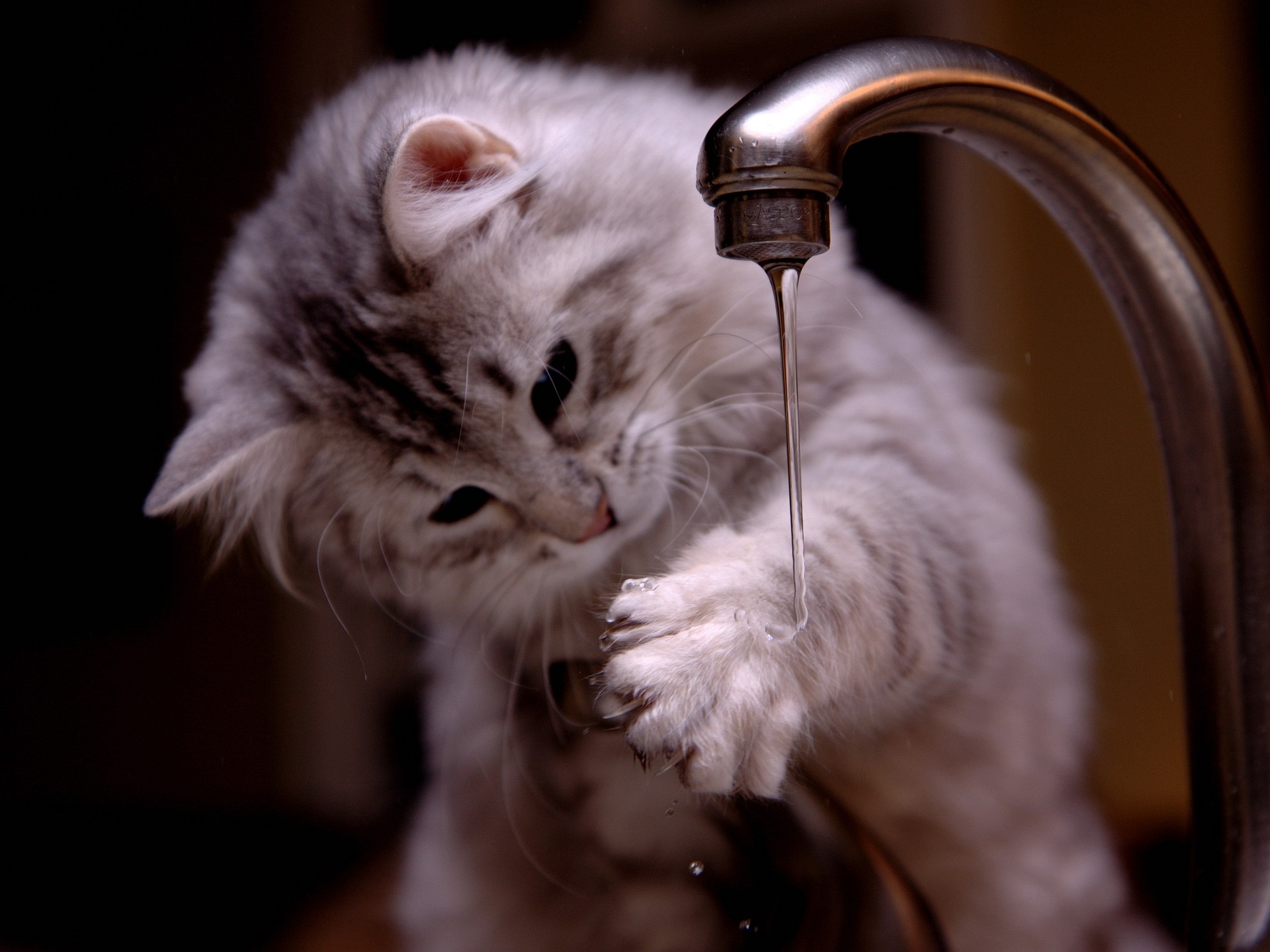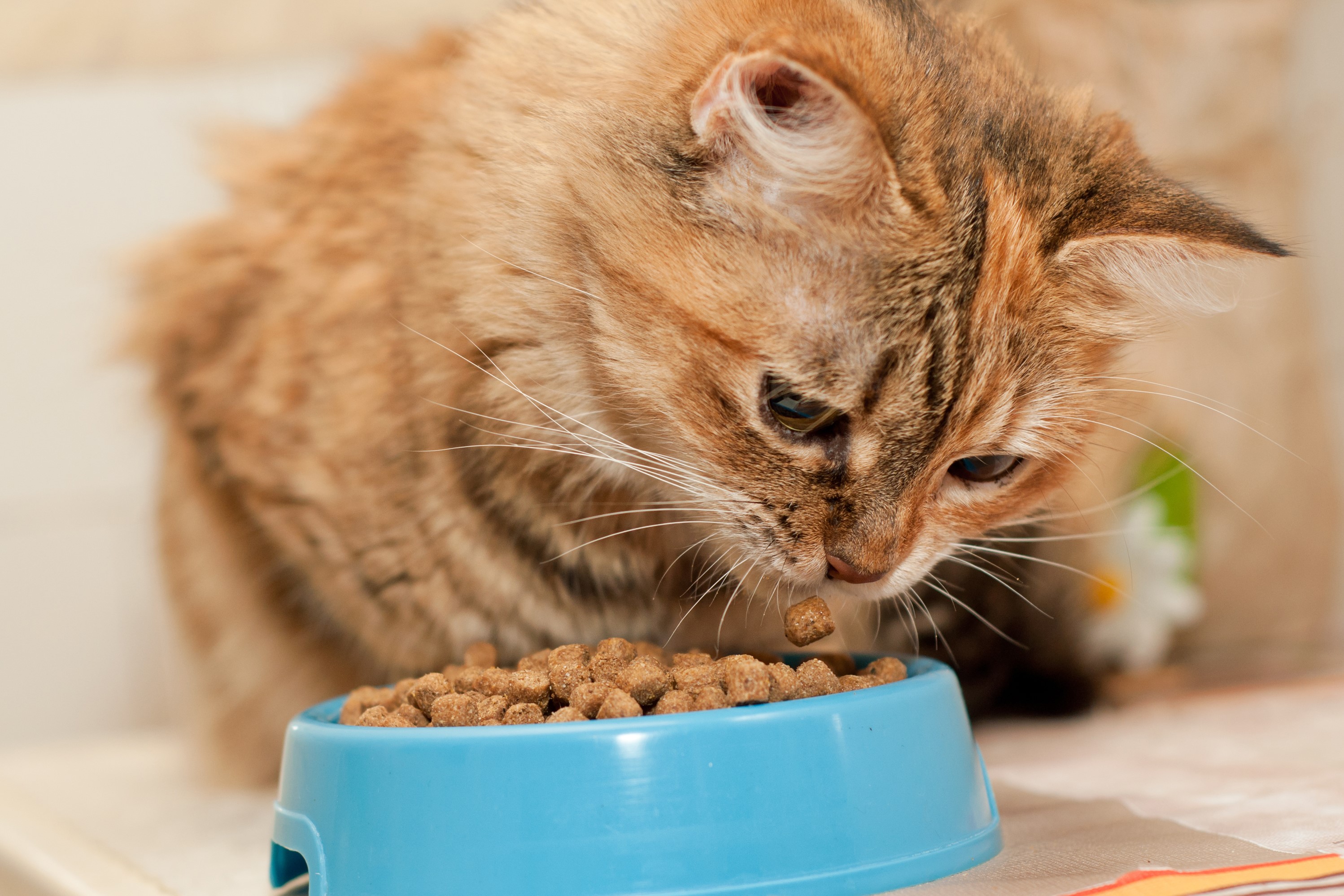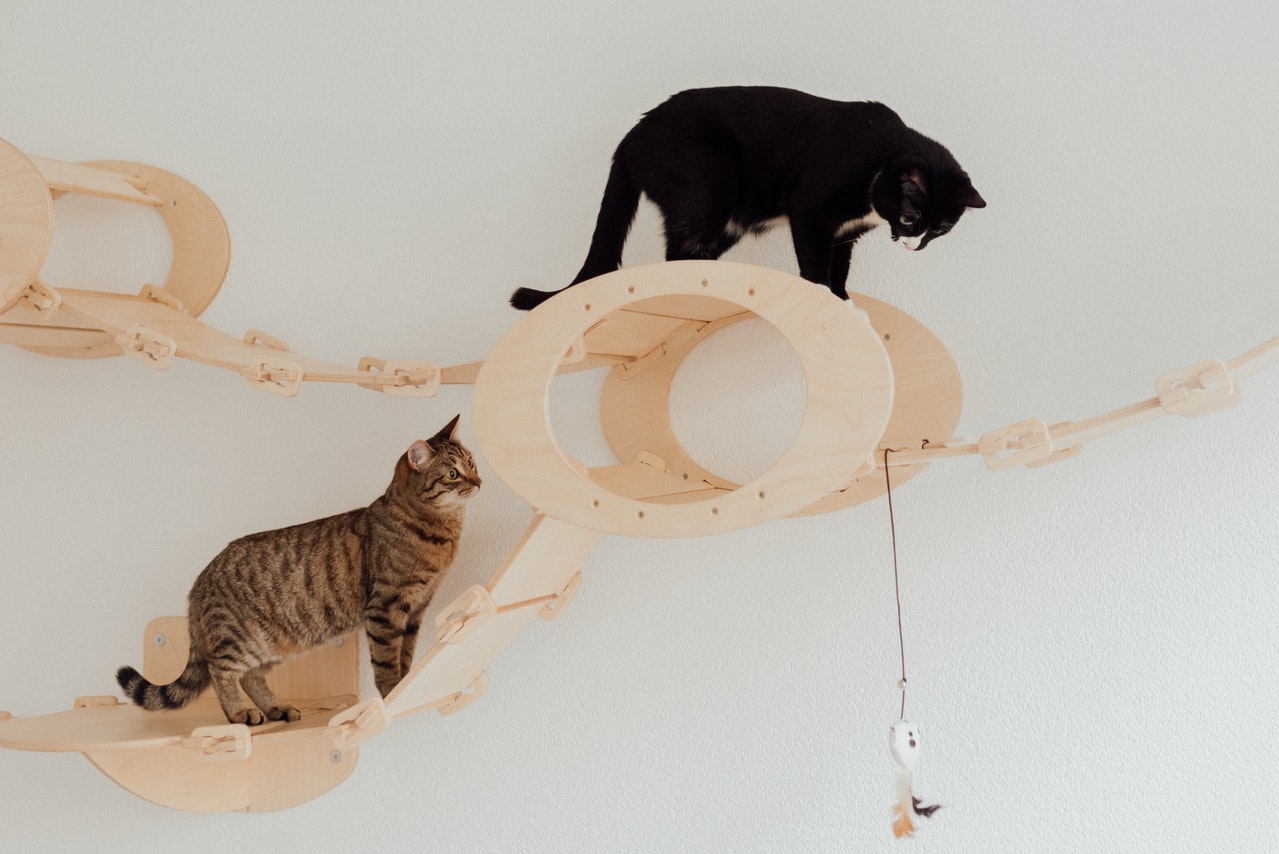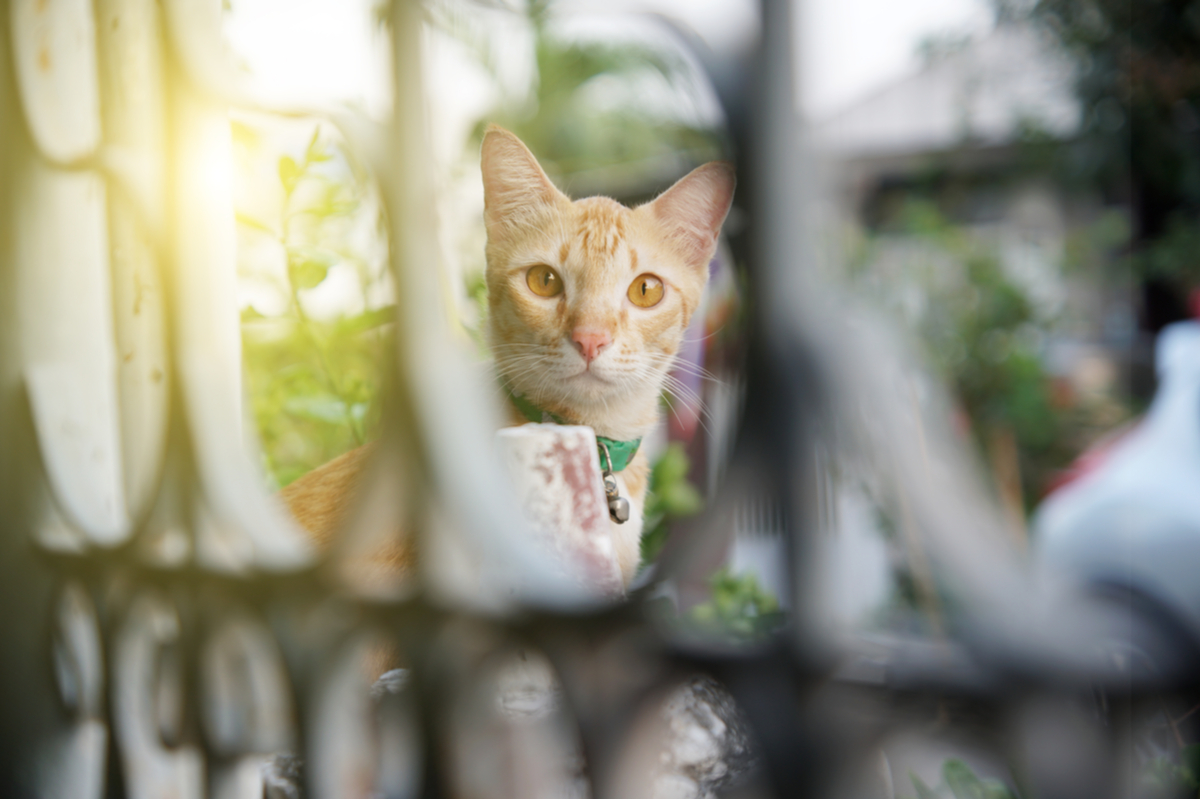If you share a household with a tiny human, odds are you’ve heard of a baby gate. But what about pet gates? Is it possible to corral our furry friends into (or out of) regions of the home? Doesn’t a baby gate work just as well? After all, who’s ever heard of cat gates?
It turns out they do exist — in a few forms. That’s good news for pet parents, especially people in multi-animal homes. Sometimes, your kitty may just need some extra space or a safe spot to keep food away from a dog that eats anything, including cat food. Here’s what to know about types of cat gates and how to choose one.
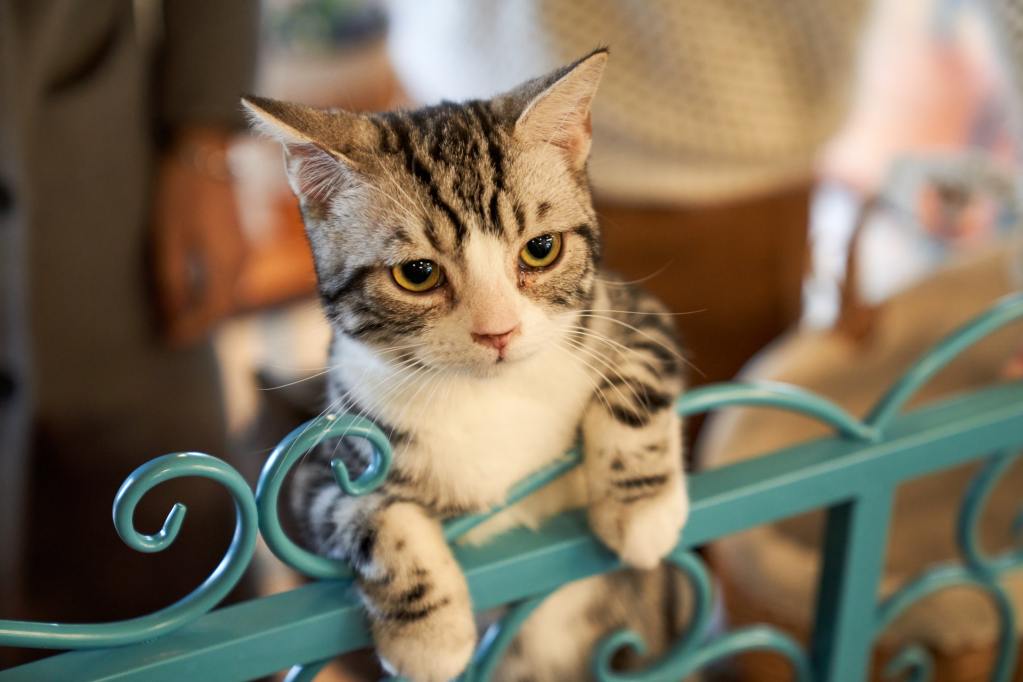
Types of pet gates for cats
When choosing to invest in a pet gate for cats, skip the baby-gate aisle. Baby gates have tiny humans in mind — not animals. They lack the sturdy construction and design cats and dogs require. Your best bet is to hit the pet store and source a pet gate.
Pet gates, in general, come in three types:
- Freestanding: You can move these gates around and set them up in different configurations. You don’t have to use screws or anchors to adhere them to the walls. Some come with walk-through gates and some don’t.
- Pressure-mounted: As you might guess, pressure-mounted gates extend between doorways or halls and stay in place with tension. They’re a little more restricted, and you have to step over them.
- Hardware-mounted: This option is best for people who own their property. These are permanent gates that stay where you place them. You can find walk-through gate options, or you can find some without. Choose your placement carefully before you start drilling.
Why you might need a cat gate for your door
At first, the notion of a cat gate might sound strange. Cats go wherever they want. It isn’t uncommon with their inquisitive nature to find your feline friend on top of bookshelves, exploring the space above the fridge, and even searching the cabinets. Do you always want them in those places, though? Not so much.
Cat gates may not always prevent the most athletic cats from their explorations, but they help define strict borders within the house. As your cat encounters the new obstacle, they will pause and consider why the doorway or stairs are blocked. Intelligent kitty minds go to work, and they’ll often wander away. Unless something is exciting on the other side of that cat gate, it’s not worth the energy to jump.
Non-cat uses for cat gates
Of course, if you share a home with cats and dogs, the pet gate takes on a new meaning. Maybe the gate helps your cat instead of hindering them.
Do these situations ring a bell?
- Your dog thinks the cat’s food tastes better
- You have a cat who needs to eat small meals throughout the day
- The dog thinks the litter box contains “treats”
- The cat needs a “dog-free” zone to relax in
Your pet gate can solve those problems. Most cats have no problem jumping over pet gates, but dogs? They don’t have the same ability.
What about jumpers?
Of course, sometimes you want to keep cats from an area. And most pet gates for cats just aren’t designed with cat anatomy in mind. Athletic breeds view that hurdle as a challenge. The dog may stop short, but cats have no problem launching themselves over the cat gate. If you want to keep cat hair off the new couch or shut your feline out of the kitchen during Thanksgiving prep, what can you do?
To start with, there are extra-tall cat gates on the market that attempt to foil that leaping prowess.
Most cats jump gates to figure out what they’re missing on the other side. If you take away the mystery, they lose interest. Here’s what you should do:
- Create a safe pile of objects on the opposite side of the gate. You’ll block your cat’s view.
- Set up hurdles in front of the gate. Your cat might get so interested in that game, they’ll forget the gate entirely.
If distraction doesn’t work, you can always switch to plan B and make the area unsavory to your cat’s senses:
- Place a sheet of sandpaper on the ground in front of the cat gate. Cats don’t like rough textures on their paws. It won’t hurt them, but they’ll start avoiding the area.
- Spray a cat deterrent around the gate. Most deterrents don’t affect your sense of smell, but cats despise them and hightail it.
Best cat gates to get for your pet
If you’re in the market for a cat gate, consider these options.
Richell 3-in-1 Convertible Pet Gate
A sturdy wooden cat gate, such as the Richell 3-in-1 Convertible Pet Gate, holds up against even a running start from the largest dogs. Better yet, you have the option of converting it into a pen, granting your kitty a zone of respite wherever it’s needed in the house. Pet gates define areas that are cat-friendly and easy for them to reach. Meanwhile, your dog learns to stay out of the “cat zone.”
Carlson Extra Tall Walk-Through Pet Gate with Small Pet Door
The Carlson Extra Tall Walk-Through Pet Gate with Small Pet Door measures a full 36 inches tall, so it can deter your cat from trying to jump over the gate. It can be adjusted to fit openings from 29 to 36.5 inches wide, meaning it will work with most doorways in your home. It also includes a 4-inch extension kit, making it a highly versatile option you can use throughout your home. The gate is highly durable — steel construction — and is chew-proof and nontoxic. It can be quickly removed and installed. The gate even features an 8-by-8-inch pet door that can let cats through while keeping larger pets out. The pet door can be locked to keep all your pets contained.
Namsan Magic Pet Gate for Dogs and Cats
The Naman Magic Pet Gate for Dogs and Cats is made of a strong nylon mesh and metal tube frame, so your cat can still feel like part of the action without having to look through metal bars. The mesh is strong enough to withstand cat claws. It measures approximately 39 by 32 inches, so it can discourage your cat from trying to jump it. It also fits most typical doorways and hallways. Pick a place for the cat gate and set it by drilling four holes in the wall. Use the rubber plugs to fix the pipe clips with screws. It easily swings open and closed for the humans of the house, while staying locked for your feline friend.
Safety 1st Eco-Friendly Nature Next Bamboo Gate
The Safety 1st Eco-Friendly Nature Next Bamboo Gate creates a solid yet safe surface to effectively keep your pets on one side. It adjusts easily between 28 and 42 inches wide, making it suitable for a variety of installations, such as in doorways and stairwells. It measures 24 inches high and features a durable bamboo frame. The panels are made of recycled plastic, so you can feel good about this eco-conscious product. Non-marring bumpers help protect your woodwork from damage, and the gate installs on pressure alone — no tools needed, and no assembly required!
You may need to take some deep breaths and work through some tricks, but you can manage cats and dogs with pet gates. The simple barrier helps your feline kiddo learn where it’s safe (or not) to go.
You just need to remember where you place those gates, so you don’t trip over them!
Editors' Recommendations
- Why you should feel honored if your cat sleeps at your feet
- 8 essential tips for disciplining cats
- Are cat clothes necessary in cold weather? What to consider
- 6 common reasons your cat sleeps under the covers and how to prevent it
- Why is your cat lying in the litter box?
